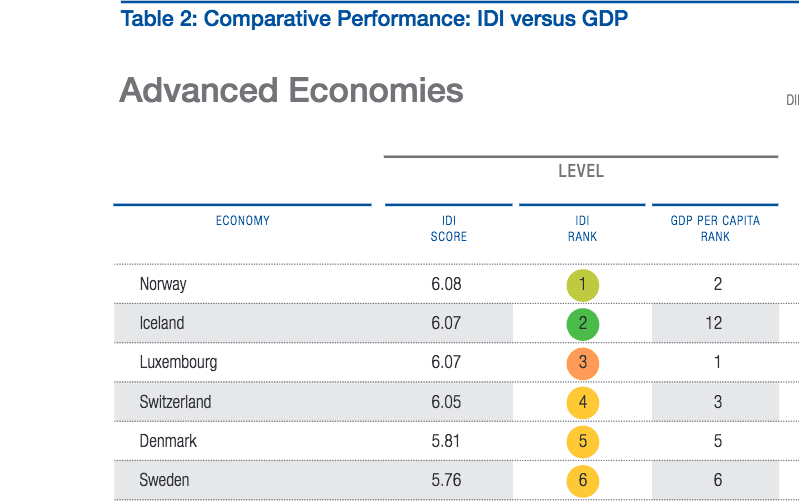It is only preceded by Norway and Iceland in the advanced economy group; Germany lands 12th, Belgium 14th and France 18th.
Using only GDP growth (aggregate amount of goods and services produced in an economy) as a measure of a country’s success has been criticised for not taking into account inequalities and slow progress in living standards. The “Inclusive Development Index 2018” study, released on 22 January, identifies 15 areas of structural economic policy and institutional strength that have the potential to contribute simultaneously to higher growth and wider social participation in the process and benefits of such growth.

The inclusive development index indicators capture not just growth and development, but also inclusion and intergenerational equity and sustainability. Apart from GDP per capita (where Luxembourg usually scores disproportionately well), the growth and development indicator also measures labour productivity, healthy life expectancy (years) and employment levels.
Meanwhile, inclusion includes factors such as net income (Gini), the poverty rate, wealth GNI and median income.
The intergenerational equity and sustainability index accounts for adjusted net savings, carbon intensity, public debt and dependency ratio. From the report:

Luxembourg: low on inclusion
While, as expected, Luxembourg scores well on growth and development in the five-year trend, it scores badly on the inclusion indicators such as net income Gini trend (0.6), the poverty trend (1.0) and the wealth Gini trend (2.4).

Notes:
Net income gini trend measures the extent to which the net distribution of income (that is, post-tax, post-transfers), among individuals or households within an economy deviates from a perfectly equal distribution. A Gini index of 0 represents perfect equality, while an index of 100 implies perfect inequality. The five-year trend is based on the absolute difference in net-income Gini over the last five most recent years available.
For advanced economies, relative income poverty is defined as less than half of the respective median national income (after taxes and transfers, and adjusted for size of household). The five-year trend is based on the absolute difference in the poverty rates between 2012 and 2016 or the most recent year.
Wealth Gini measures the differences in the distribution of wealth--higher Gini coefficients signify greater inequality in wealth distribution, with 1 signaling complete inequality and 0, complete equality. The five-year trend is based on the absolute difference in wealth Gini between 2013 and 2017.
